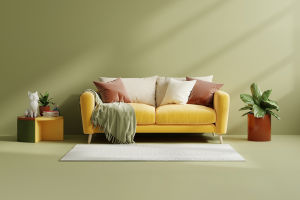In modern home design, furniture arrangement is not just a functional necessity, but also an expression of aesthetics.
Proper furniture pairing can make a space appear more harmonious and beautiful, enhancing the quality of life.
This article provides practical furniture pairing guidelines to help you achieve your desired effect in home decor.
1. Determine Your Style
Before starting to arrange furniture, it’s essential to identify the overall style you want to pursue. Common home styles include modern minimalist, Scandinavian, industrial, and rustic.
Each style has its unique characteristics; for example, modern minimalist emphasizes simplicity and functionality, while Scandinavian focuses on warmth and natural elements. Once you clarify your style, it becomes easier to choose complementary furniture.
2. Consider Space Layout
The layout of the space is crucial when arranging furniture. Consider the room's area, shape, and the direction of natural light.
In larger spaces, you might use larger pieces like sofas and bookshelves to fill the emptiness, while in smaller areas, multifunctional furniture such as sofa beds or storage ottomans can save space and enhance practicality.
3. Color Coordination
Color plays a significant role in furniture pairing. It is generally recommended to choose one or two primary colors and one or two accent colors to achieve visual balance.
For instance, if the primary color is warm beige, deep-colored sofas, and bright cushions can provide contrast, adding depth. When selecting colors, consider the room's lighting; brighter spaces can accommodate darker shades, while dimmer areas benefit from lighter hues to boost vitality.
4. Material Combination
Different furniture materials can create rich visual effects. When pairing, try combining wood, metal, glass, and fabric. For example, a wooden dining table paired with metal chairs can perfectly blend modernity with a natural feel.
5. Personal Elements
To give your home space more personality, add unique decorative items such as artwork, plants, and handicrafts. These elements not only enrich the layers of the space but also showcase the owner's taste and individuality. When choosing decorations, ensure they align with the overall style to avoid visual chaos.
6. Appropriate Empty Space
Whitespace is also an aesthetic in furniture arrangement.
An overcrowded space can feel oppressive, so leaving some areas empty can make the space feel more open and allow for breathing room. When arranging, try not to place furniture or decor in every corner; leaving some blank areas can create a more comfortable and spacious atmosphere.
7. Continuous Experimentation and Adjustment
Furniture pairing does not have a fixed standard; it is more about personal aesthetics and experience.
During the arrangement process, feel free to experiment with different combinations and adjust according to personal preferences and lifestyle. Over time, you might discover new inspirations or need to rearrange due to changes in your lifestyle. Flexibility is a significant advantage in home decor.
Conclusion
Furniture arrangement is a process that balances creativity and practicality. Through thoughtful pairing, you can make your home space more comfortable and beautiful. We hope these guidelines inspire you in your furniture selection and arrangement.


